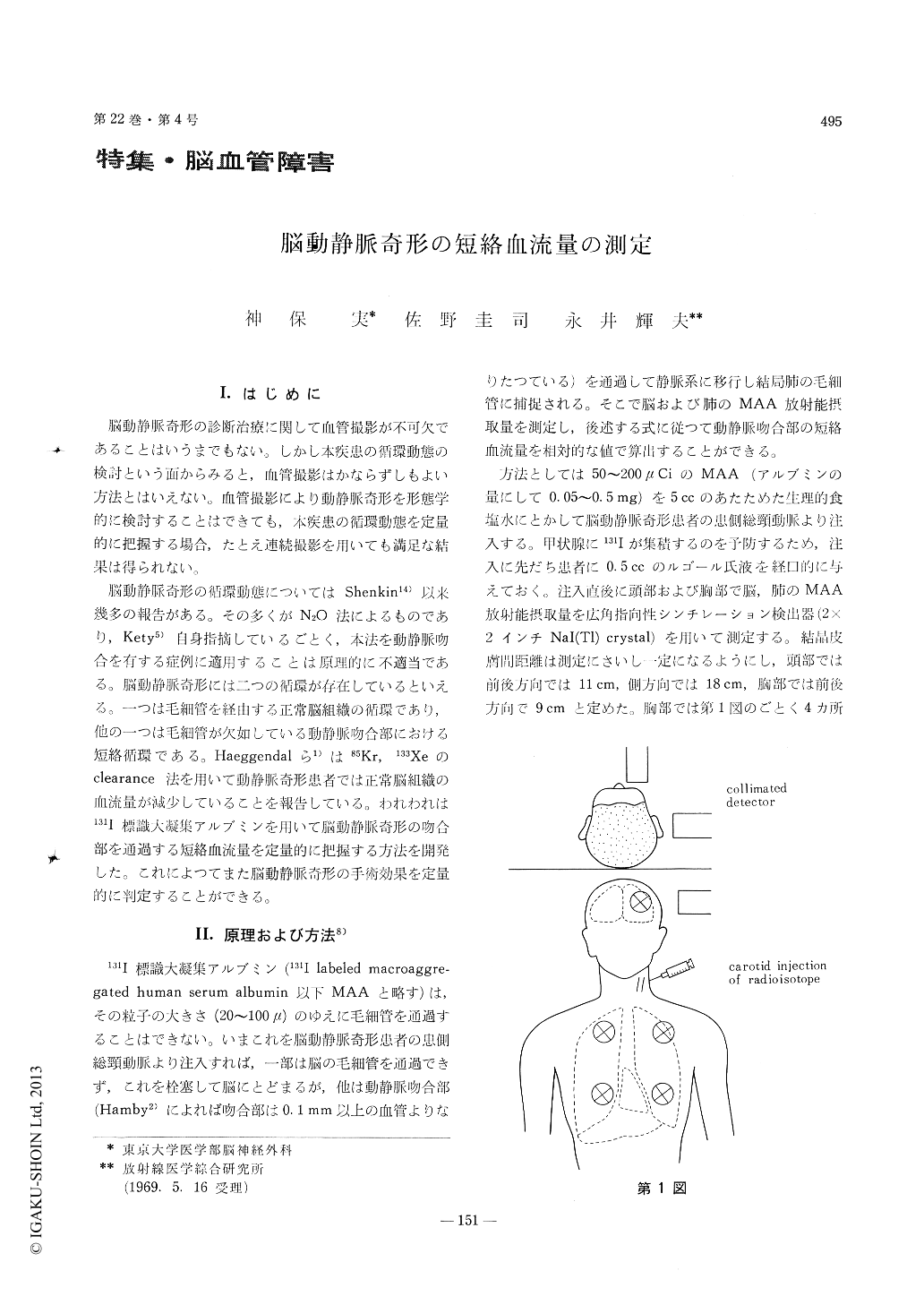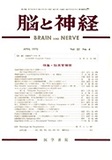Japanese
English
- 有料閲覧
- Abstract 文献概要
- 1ページ目 Look Inside
I.はじめに
脳動静脈奇形の診断治療に関して血管撮影が不可欠であることはいうまでもない。しかし本疾患の循環動態の検討という面からみると,血管撮影はかならずしもよい方法とはいえない。血管撮影により動静脈奇形を形態学的に検討することはできても,本疾患の循環動態を定量的に把握する場合,たとえ連続撮影を用いても満足な結果は得られない。
脳動静脈奇形の循環動態についてはShenkin14)以来幾多の報告がある。その多くがN2O法によるものであり,Kety5)自身指摘しているごとく,本法を動静脈吻合を有する症例に適用することは原理的に不適当である。脳動静脈奇形には二つの循環が存在しているといえる。一つは毛細管を経由する正常脳組織の循環であり,他の一つは毛細管が欠如している動静脈吻合部における短絡循環である。Haeggendalら1)は85Kr, 133Xeのclearance法を用いて動静脈奇形患者では正常脳組織の血流量が減少していることを報告している。われわれは131I標識大凝集アルブミンを用いて脳動静脈奇形の吻合部を通過する短絡血流量を定量的に把握する方法を開発した。これによってまた脳動静脈奇形の手術効果を定量的に判定することができる。
For the purpose of quantitative measurement of the shunt flow of the cerebral arteriovenous mal-formations, a new radioisotopic technique using I-131 labeled macroaggregated human serum albumin was developed.
Seven cases of arteriovenous malformation were investigated pre- and postoperatively by means of this method.
Technical details and results were presented and hemodynamic aspects of cerebral arteriovenous mal-formations were discussed in comparison with an-giographic findings.

Copyright © 1970, Igaku-Shoin Ltd. All rights reserved.


